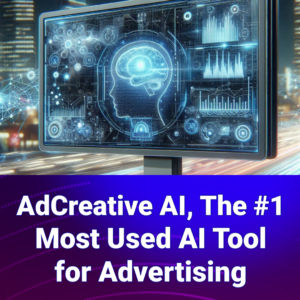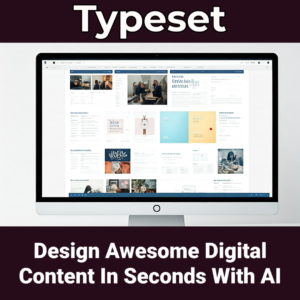In an era where information is a critical asset, effective knowledge management has become paramount for organizations seeking to thrive in today’s competitive landscape. Recognizing this need, Creately* has recently published “The Ultimate Guide to Knowledge Management: Strategies, Tools, and Best Practices,” a comprehensive resource designed to empower businesses with the insights and tools necessary to harness their collective wisdom.
This guide, released on February 5, 2025, offers a deep dive into the world of knowledge management, covering everything from fundamental objectives to cutting-edge strategies and tools[5]. Whether you’re a small startup or a large enterprise,
Creately’s guide promises to equip you with the knowledge and practical advice needed to implement a robust knowledge management system, ultimately driving innovation, improving decision-making, and boosting organizational efficiency.
Understanding Knowledge Management
At its core, Knowledge Management is the systematic approach to capturing, organizing, and utilizing the collective wisdom within an organization. It goes beyond simple information storage, encompassing the creation, sharing, and application of knowledge to drive business objectives. By implementing effective KM strategies, companies can unlock the full potential of their intellectual assets, leading to increased productivity, improved problem-solving capabilities, and enhanced innovation.
The Knowledge Management Process
Successful KM implementation follows a cyclical process that includes knowledge creation, capture, organization, sharing, and utilization. This ongoing cycle ensures that valuable insights are continuously harvested, refined, and made accessible across the organization. By fostering a culture of knowledge sharing and collaboration, businesses can create a dynamic environment where ideas flourish and innovation thrives.
Benefits of Implementing Knowledge Management
The advantages of a well-executed KM strategy are far-reaching. Organizations can expect to see significant improvements in employee efficiency and productivity as team members gain quick access to relevant information and expertise. Decision-making processes become more informed and agile, leading to better outcomes and reduced risks. Moreover, KM fosters a culture of continuous learning and innovation, enabling companies to adapt swiftly to market changes and stay ahead of the competition.
Key Components of a Successful KM Strategy
To maximize the benefits of Knowledge Management, it’s essential to align KM initiatives with overarching organizational goals. This alignment ensures that KM efforts contribute directly to business objectives. Equally important is the cultivation of a knowledge-sharing culture, where employees are encouraged and incentivized to contribute their insights and expertise. Selecting the right KM tools and technologies is crucial, as is engaging stakeholders at all levels to ensure widespread adoption and participation.
Best Practices for Knowledge Management Implementation
Implementing KM effectively requires a strategic approach. Start by setting clear, measurable objectives that tie directly to business outcomes. Standardize documentation and retrieval processes to ensure consistency and ease of access. Create incentive programs that reward knowledge contributions and foster a culture of sharing. Remember that KM is not a one-time initiative but an ongoing process of continuous improvement and adaptation.
Overcoming Common KM Challenges
While the benefits of KM are significant, organizations may face challenges during implementation. Resistance to change is common and can be addressed through clear communication and demonstrating the value of KM initiatives. Ensuring data security and privacy is paramount, especially when dealing with sensitive information. Managing information overload and maintaining knowledge relevance are ongoing tasks that require careful curation and organization of content.
The Role of Technology in Knowledge Management
Technology plays a crucial role in modern KM strategies. A wide array of KM tools and software solutions are available, offering features such as document management, collaboration platforms, and knowledge repositories. When selecting KM tools, consider how they will integrate with existing business systems and prioritize user-friendly interfaces to encourage adoption and regular use.
Measuring the Impact of Knowledge Management
To justify investment in KM initiatives, it’s important to measure their impact on organizational performance. Establish key performance indicators (KPIs) that align with your KM objectives and overall business goals. These might include metrics such as time saved in information retrieval, improved project outcomes, or increased innovation rates. Regularly assess the return on investment (ROI) of your KM efforts and use these insights to refine your strategy.
The Future of Knowledge Management
As technology continues to evolve, so too does the field of Knowledge Management. Emerging trends such as artificial intelligence and machine learning are set to revolutionize how organizations capture, analyze, and utilize knowledge. Additionally, the rise of remote and hybrid work environments has underscored the importance of effective KM strategies in maintaining connectivity and collaboration across dispersed teams.
Leveraging Creately for Effective Knowledge Management
For organizations looking to implement or enhance their Knowledge Management strategies, Creately offers a powerful and intuitive platform. With its user-friendly interface and robust features, Creately supports every aspect of the KM process, from visual mapping of knowledge assets to collaborative content creation and sharing. Whether you’re a small startup or a large enterprise, Creately’s scalable solutions can help you unlock the full potential of your organizational knowledge.
Ready to transform your organization’s approach to Knowledge Management? Explore Creately’s comprehensive guide and discover how our platform can support your KM journey. Visit Creately’s Knowledge Management Guide to learn more and get started today.
* This post contains affiliate links. If you click through and make a purchase, I may earn a small commission at no extra cost to you. Thank you for supporting this blog.














